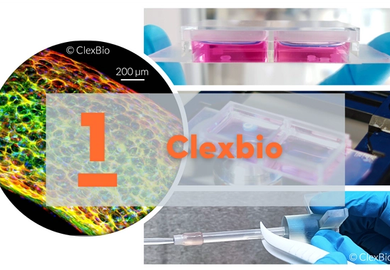ClexBio
Engineering human tissue implants
What is the Challenge?
Millions of patients around the world suffer due to severely diseased or lost organs or tissues, for which there are no available transplants or treatment options. Solutions based on artificial implants come with several challenges for patients and are often inadequate and short lasting, so the need for a paradigm shift towards biological solutions is more urgent than ever. What if we could use the body’s own cells to restore, maintain, or improve damaged tissues or organs?

